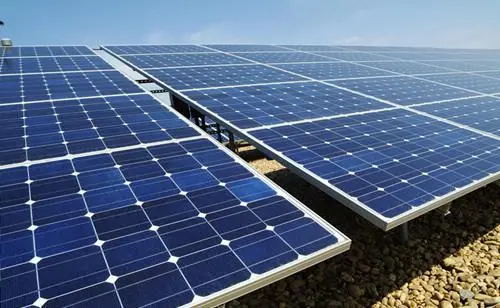Welcome to Wuhan Yoha Solar Technology Co., Ltd!
common problem
Site Map
Language:
 Chinese
Chinese
 English
English
Welcome to Wuhan Yoha Solar Technology Co., Ltd!
common problem
Site Map
Language:
 Chinese
Chinese
 English
English
1、 What is solar photovoltaic power generation? What is distributed solar photovoltaic power generation?
Solar photovoltaic power generation refers to the power generation method that directly converts solar radiation into electrical energy, and solar photovoltaic power generation is the mainstream of solar power generation today.
Distributed solar photovoltaic power generation refers to solar photovoltaic power generation equipment that is built near the user's location, operates mainly for self use by the user, and the remaining electricity is connected to the grid, but is characterized by balancing and adjusting the distribution system.
Distributed solar photovoltaic power generation follows the principles of adapting to local conditions, clean and efficient, decentralized layout, and nearby use, fully utilizing local solar energy resources to replace and reduce fossil fuel consumption.

2、 How does solar photovoltaic cells generate electricity?
Solar photovoltaic cells are semiconductor devices with photovoltaic and electrical conversion characteristics. They directly convert solar radiation energy into direct current and are an important unit of solar photovoltaic power generation. The unique electrical characteristics of solar photovoltaic cells are achieved by doping certain elements (such as phosphorus or boron) into crystalline silicon, and then creating a permanent imbalance in the molecular charges of the data, forming semiconductor data with special electrical functions, Under sunlight, semiconductors with special electrical functions can generate free charges, which move and accumulate in a directed manner. When their two ends close, they generate electrical energy, which is known as the photovoltaic effect.
3、 What are the components of a solar photovoltaic power generation system?
The solar photovoltaic power generation system consists of photovoltaic arrays (photovoltaic arrays are composed of photovoltaic modules in series and parallel), controllers, battery packs, DC/AC inverters, and other components. The core component of a solar photovoltaic power generation system is photovoltaic modules, which are packaged in series, parallel, and parallel with photovoltaic cells. They directly convert the solar energy into electrical energy, and the electricity generated by solar photovoltaic modules is DC. We can use inverters to convert it into AC electricity for use. From another perspective, the electricity generated by photovoltaic systems can be used immediately, Energy storage devices such as batteries can also be used to store electrical energy and release it for use as needed.
4、 What is a distribution network? What is the relationship between distribution network and distributed solar photovoltaic power generation?
The distribution network is a power grid that receives electricity from the transmission network or regional power plants, and is distributed locally or step by step according to voltage to various users through distribution equipment. It is composed of overhead lines, cables, towers, distribution transformers, isolation switches, reactive power compensation capacitors, metering equipment, and some auxiliary equipment, generally designed in a closed loop and operated in a circular manner. Its structure is radial, The integration of distributed power sources into the distribution network results in the coexistence of power generation and consumption in the distribution system. The distribution network structure has changed from a radial structure to a multi power source structure, and the size, direction, and distribution characteristics of short-circuit currents have been modified.
5、 Why is solar power considered a green and low-carbon power source?
Solar power generation has obvious power, environmental protection, and economic benefits, and is one of the highest quality green power sources. Installing a 1 kW photovoltaic power generation system under uniform sunlight conditions in China can generate 1200 kWh of electricity per year, reduce coal (standard coal) usage by about 400 kilograms, and reduce carbon dioxide emissions by about 1 ton. According to research by the World Wildlife Fund (WWF), in terms of carbon dioxide reduction effect, A 1 square meter photovoltaic power generation system is equivalent to planting 100 square meters of trees and forests. Currently, renewable power such as solar photovoltaic power generation is one of the useful methods to fundamentally address environmental problems such as haze and acid rain.
6、 How much sunlight is available for use? Can it become the dominant driving force for the future?
The solar radiation borne by the surface of the Earth can meet the global power demand by 10000 times, and the radiation received per square meter on the surface of the Earth varies by region, ranging from approximately 1000-2000KWH per year. According to data from the World Power Agency, installing solar photovoltaic systems in 4% of the world's deserts is sufficient to meet the global power demand. Solar photovoltaics have a wide development space and enormous potential.
According to preliminary statistics, China's market potential for photovoltaic power generation using existing building installations alone is about 3 trillion kilowatts or more. In addition, the vast Gobi photovoltaic power generation market in the western region has a potential of several billion kilowatts or more. With the technological progress and large-scale use of solar photovoltaic power generation, its power generation cost will further decrease, becoming an increasingly competitive power supply method, Gradually transitioning from supplementing power to replacing power and hoping to become the dominant driving force in the future.
keywords:TOP
18086473422
MESSAGE
